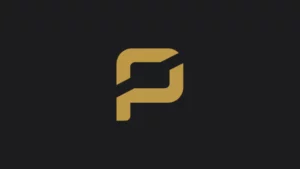What are the technical foundations and application scenarios of the BSY token in bioscience?
The BSY token leverages Solana’s high throughput (tens of thousands of transactions per second) and low-cost features, with technical foundations including post-quantum encryption (e.g., lattice-based) for data security and smart contract-driven decentralized governance.
Application scenarios span synthetic biology and gene editing, such as storing and trading genomic sequences and experimental data on a decentralized platform, facilitating cross-institutional collaboration via DAO, and using DeFi tools for research crowdfunding and result tokenization to accelerate lab-to-market transitions. BSY’s compatibility with Solana wallets (e.g., Phantom) lowers barriers for small institutions, driving biotech innovation.
How does BSY’s consensus mechanism support the ecosystem’s sustainability?
BSY employs Solana’s Proof of History (PoH) combined with Proof of Stake (PoS), where PoH ensures efficient time-stamping and PoS provides low-energy, high-security consensus.
This supports sustainability by reducing transaction costs with high throughput to attract users, aligning with eco-friendly trends through low energy use, and offering 5-10% staking rewards to encourage long-term holding, stabilizing token value.
The 30% mining allocation further fosters community growth, ensuring a balanced ecosystem.
What are the design goals of BSY’s token subscription and listing process?
The BSY subscription and listing process aims for fair distribution and market stability. The subscription period (July 7-12, 2025, at $1/token) via IDO engages the global community, with allocations announced on July 13 and payment due, ensuring transparency. Listing at 00:00 HKT on July 14, 2025, leverages Solana’s performance for efficiency. The 40% IDO allocation rewards early supporters, 5% team lockup (3 years) ensures commitment, and 15% foundation funds support social responsibility, balancing short-term promotion with long-term growth.
How does the BSY staking mechanism balance economic incentives with network security?
BSY’s staking mechanism offers 5-10% annualized returns, dynamically adjusted by network participation, incentivizing users to lock tokens for network security. Higher staking rates strengthen PoS consensus against 51% attacks, while dynamic adjustments align rewards with demand, preventing inflation. The 30% mining reserve releases gradually to avoid market volatility. Staking via Solana wallets also enables governance, balancing economic benefits with ecosystem stability.
How does BSY address biological data privacy challenges through encryption?
BSY uses post-quantum encryption (e.g., lattice-based) to protect genomic data from quantum threats, with decentralized storage eliminating single-point failures. Compliant with HIPAA and GDPR, it provides user-controlled access via smart contracts, encrypting data-sharing processes for privacy and compliance. Solana’s efficiency reduces transmission vulnerabilities, creating a secure, trustworthy bioscience data ecosystem.
How does BSY’s token economics allocation support its long-term development goals?
With a total supply of 500,000,000 tokens, 40% IDO attracts early investment, 30% mining incentivizes community engagement, 15% foundation funds education and R&D, 10% marketing boosts visibility, and 5% team lockup (3 years) ensures commitment. This allocation balances short-term funding with long-term growth, supporting synthetic biology innovation, global collaboration, and DeFi applications to achieve health, food security, and sustainability goals.
What is the strategic significance of BSY listing on global exchanges?
BSY’s listing on July 14, 2025, enhances global liquidity, attracts investment and users, and boosts brand recognition.
Solana’s cross-chain bridge (e.g., Wormhole) enables interoperability with major chains like Ethereum, expanding market reach. A successful listing will validate BSY’s technological value, promote biological data commercialization, and strengthen BioSynth’s leadership in global biotech and blockchain.
How does BSY DAO governance influence the platform’s technical and policy development?
BSY DAO allows holders to vote on data standards, protocol upgrades, and resource allocation, with governance contracts on Solana ensuring transparency. Community-driven decisions via smart contracts balance innovation with user needs, preventing centralized control. Over time, DAO adapts the platform to regulatory changes, optimizes bioscience data-sharing efficiency, and enhances ecosystem resilience.
What are the primary risks of investing in BSY and the corresponding mitigation measures?
BSY investment faces risks from market volatility, technical vulnerabilities (e.g., potential Solana bugs), and regulatory uncertainty.
BioSynth mitigates these with post-quantum encryption to reduce technical risks, AML/KYC and HIPAA/GDPR compliance to address regulations, and transparent disclosures to manage market expectations. Investors should study the whitepaper, diversify investments, and monitor ecosystem developments post-July 2025 launch.


